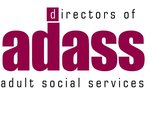Single Assessment Framework – Are you transition ready?

15 August 2023
CareLineLive’s Homecare Champion, Merina Martin, has shared her insights on how to be ready for the CQC’s new Single Assessment Framework. Guidance from CQC has become much clearer with more detail of how they intend to transition all services to the Single Assessment Framework. With this in mind this series of articles shares Merina’s expertise and customer insights and explores what the new ways of working will look like in terms of assessment and inspection.
Are you evaluating your service?
Collecting evidence of good practice helps you to evaluate and improve your service. Of course to get a balanced view of your service, being open, honest and transparent is a must! Therefore highlighting areas of complaint and negative feedback and how they have been managed and actioned is equally as valuable.
For those working in home care, you will be familiar with the fast paced environment where no two days are the same and where spare time is at a premium. Be that as it is, with regulation comes compliance and being able to provide detailed evidence to support your registration is an expectation that providers of health and social care adhere to in all sectors.
Many providers are daunted by the significant responsibility that compliance brings to the table, but, those who have robust systems and processes in place find that this helps to naturally produce evidence of good practice. It’s fair to say that although this is the case, it can be tricky and time-consuming to collect the physical evidence and to store it effectively ready for viewing.
Being methodical and dedicated is the key!
When thinking about evidence collection focusing on the service user alone is not enough. Instead consider the whole circle of care which means their families, friends, advocates and unpaid carers. You will be meeting the needs of those with protected equality characteristics and those who are likely to have a poorer experience or experience inequalities. This is where you can really dig down into your service and make improvements to meet the specifics of person-centred care and in turn showcase this when presenting evidence. Devoting time and commitment to evidence collection is key. My advice would be to dedicate a window of time for evidence management that suits your business and available resources. A big mistake is to let this slip resulting in weeks or months going by with no evidence being collected, then having to hunt around for those great pieces of evidence that have disappeared into the abyss!
Allocate a daily window for this task, and appoint a dedicated member of staff to champion evidence collection. It’s well worth doing this as it empowers people in the business with responsibility and will allow them to forge relationships with staff, service users and stakeholders. Your champion can be creative in ways of collecting evidence through a variety of methods including surveys, quality assurance questionnaires, regular reviews across the service and actively encouraging feedback from all stakeholders. It is incredibly important to gain feedback from all stakeholders and to analyse, report on it and learn from it. You may receive emails and letters, the content of which can be used as evidence.
CareLineLive’s management portal gives you lots of opportunities to produce evidence e.g. the reporting feature, assessments, reviews, e-Mar, incident reporting etc.
Here’s how CareLineLive can help with compliance.
Be sure to gain consent and follow data protection guidelines when collection and sharing evidence!
Storing your evidence ready for assessment and inspection.
As CQC are transitioning to the Single Assessment Framework, it would be prudent to embed your evidence practices and be ‘transition ready’ so that once the provider portal is fully launched you will have everything in place to make the process pain free.
The simplest way if you are a CareLineLive customer to create evidence folders for your clients and carers is to go to the client or carer journal feature and add all of the information by creating a category, we advise one for each key question. If you prefer to use a folder to deposit evidence on your PC for each key question that will work too. You may be doing this already for the key lines of enquiry, if so you’re well on your way to developing a good process. Remember that the key lines of enquiry will be no more, and they will be referred to as key questions. With each key question there will be a number of quality statements and evidence categories. See our e-guide, case studies, articles and blogs for more information.
To make your system fully functioning, add subfolders for each quality statement and evidence category. This will help you to really dig down into meeting the requirements of the new framework and it will also highlight your weakness and areas for improvement. Obviously when the CQC provider portal is fully functioning, you will be able to share information that is at your fingertips, with ease.
This is an exciting time of change and being ‘transition ready’ will help with unidentified challenges that may be faced. Our series ‘Moving forward with CQC’ aims to help smooth this period of uncertainty.
You can find CareLineLive’s previous articles on the New Single Assessment Framework in the links below:
- The new CQC Single Assessment Framework. What we know so far.
- Care Quality Commission and moving forward with the Single Assessment Framework







